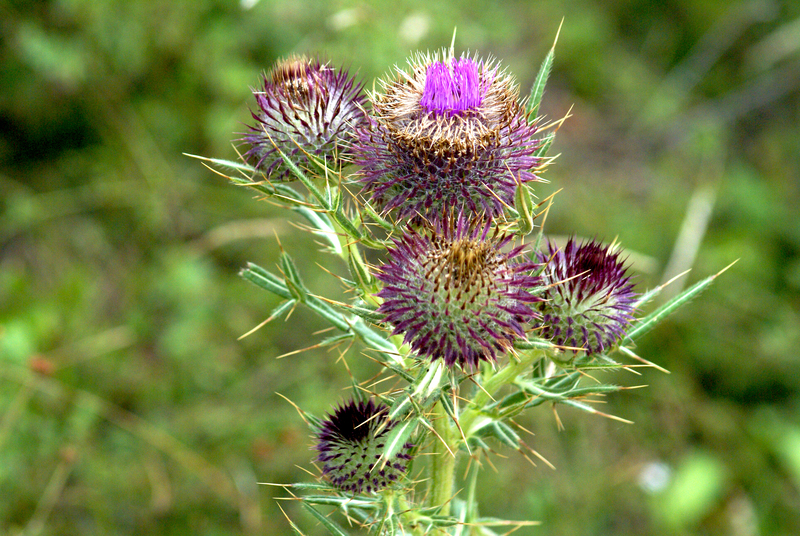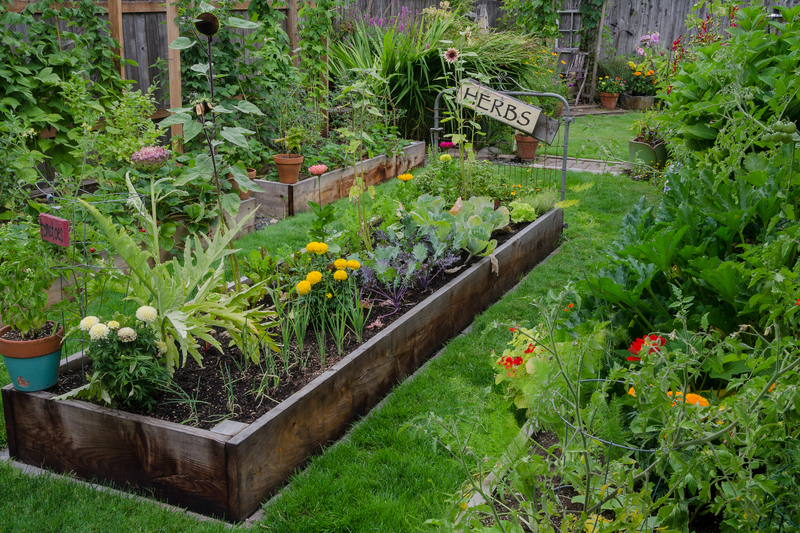Transform Your Garden with Advanced Hedge Trimming Styles
Posted on 29/08/2025
Transform Your Garden with Advanced Hedge Trimming Styles
Is your garden in need of a fresh, eye-catching makeover? One of the most effective ways to elevate your outdoor space is through advanced hedge trimming styles. Here, we'll delve into creative approaches for sculpting your hedges, explore expert techniques for beginners and seasoned gardeners, and provide you with a comprehensive guide to transforming your landscape--all while improving your garden's health and increasing its value.
Why Embrace Advanced Hedge Trimming?
Many homeowners limit their hedge trimming to simple, straight lines. While tidy hedges undoubtedly look appealing, embracing advanced hedge trimming offers:
- Personalized garden aesthetics: Reflect your unique style through creative shapes and designs.
- Increased property value: Attractive landscaping enhances curb appeal.
- Healthier plants: Professional trimming techniques can improve light and air circulation within your hedges.
- Biodiversity: Innovative trimming styles can support birds, insects, and other wildlife.
Evolution of Hedge Trimming Styles
From the grand parterre gardens of Versailles to contemporary green art in modern cities, hedge trimming has come a long way. Today, you can merge classic elegance with cutting-edge techniques to create a visually stunning and functional garden.

Understanding Advanced Hedge Trimming Styles
To transform your garden with advanced hedge trimming, it's important to recognize the diversity of styles available. Each technique brings its own charm and challenges.
1. Topiary Art: Sculpting Green Masterpieces
Topiary is the ancient art of trimming shrubs or trees into intricate shapes, ranging from classic geometric forms to whimsical animals. This style can instantly become the focal point of your garden.
- Geometric shapes: Cubes, spheres, pyramids, and cones are perfect for formal gardens and entryways.
- Animal and human figures: Create playful or dramatic effects using boxwood, yew, or privet.
- Themed designs: From spirals to initials, let your creativity run wild!
Tip: Start with simple geometric forms before progressing to intricate designs. Use garden wire frames for guidance.
2. Cloud Pruning: Japanese Niwaki Technique
Cloud pruning (or Niwaki) is inspired by Japanese gardens. This style involves shaping shrubs into soft, rounded clusters that resemble clouds. It's a stunning way to add an artistic, Zen-like ambiance to your landscape.
- Best plants: Pine, boxwood, yew, holly, and azalea.
- Benefits: Creates visual flow, emphasizes harmony, and highlights architectural features.
Tip: Prune gradually over several seasons to encourage dense foliage and desirable shapes.
3. Pleaching: Living Fences and Screens
Pleaching involves interweaving hedge branches in a horizontal or crisscrossed pattern along frames or wires, creating a living fence or screen. This style is perfect for privacy, windbreaks, and defining outdoor spaces.
- Ideal species: Hornbeam, beech, lime, and plane trees.
- Popular uses: Garden walls, tunnels, archways, and allees.
_Interesting fact_: Pleached trees lined the walkways of Renaissance gardens and are still a favorite in modern landscape architecture.
4. Espalier: Artful Two-Dimensional Hedging
Espalier is a technique where shrubs or fruit trees are pruned and trained against flat surfaces--fences, walls, or trellises--in symmetrical, decorative patterns.
- Best choices: Apple, pear, camellia, and pyracantha.
- Advantages: Maximizes small spaces, increases fruit production, and enhances architectural interest.
_Pro Tip_: Espalier is ideal for small urban gardens where space is at a premium.
5. Formal vs. Informal Hedges
- Formal hedges: Characterized by precise, straight lines or symmetrical curves. Suits classical and contemporary gardens.
- Informal hedges: Shaped more naturally, with gentle curves and a less regimented appearance. Best for cottage or wildlife gardens.
Combine both to create visual interest and guide the movement throughout your space!
Selecting the Right Hedges for Advanced Trimming
Not all hedging plants respond equally to shaping and pruning. For spectacular results, choose species renowned for dense foliage and fine growth. Here are some popular options:
- Boxwood (Buxus sempervirens): Ideal for topiary and formal hedges. Evergreen, small-leaved, and tolerant of frequent trimming.
- Yew (Taxus baccata): Robust and long-lived, yew is superb for all advanced hedge trimming styles, especially topiary and cloud pruning.
- Privet (Ligustrum): Grows quickly and thickly--excellent for privacy screens and intricate forms.
- Beech (Fagus sylvatica): Perfect for pleaching and traditional hedges; retains russet leaves in winter for year-round interest.
- Pyracantha: Makes a decorative and secure hedge with bright berries and is suitable for espaliers.
- Hornbeam (Carpinus betulus): Responds well to pleaching and formal shaping.
Tools and Techniques for Advanced Hedge Trimming
Achieving flawless advanced hedge shapes requires the right tools and an understanding of key techniques.
Essential Tools
- Quality shears: Hand shears for detailed shaping, and powered hedge trimmers for extensive areas.
- Pruning saws: For removing thicker branches in older hedges.
- Measuring tapes, levels, and string lines: Maintain precision and symmetry.
- Topiary frames: Wire or mesh templates to guide intricate designs (ideal for beginners).
- Protective gear: Gloves, safety goggles, and sturdy footwear.
Trimming Techniques for Show-Stopping Results
- Start with healthy plants: Strong, disease-free hedges recover faster from trimming and produce denser foliage.
- Plan your shape: Visualize or sketch your design. Use frames or chalk lines, particularly for complex patterns.
- Trim lightly and regularly: Remove small amounts with each trim. Avoid drastic cuts, which can stress the plant.
- Cut at the correct time: Most hedges benefit from trimming in late spring and again in late summer. Avoid pruning during severe heat or frost.
- Maintain a wider base: Keep the hedge slightly broader at the bottom, which helps light reach lower leaves and prevents bare patches.
- Step back frequently: Check your progress every few cuts to keep the lines and curves accurate and pleasing.
Step-by-Step Guide: Creating a Unique Topiary Shape
Ready to transform your garden with a distinctive design? Let's walk through a basic topiary project for beginners--shaping your hedge into a simple spiral:
- Select a dense, upright shrub such as boxwood or yew.
- Potted or in-ground specimens work equally well.
- Install a spiral topiary frame or use garden twine to create a spiral guide around your hedge.
- Use sharp, clean shears to trim along the spiral, leaving tufts between cuts for contrast.
- Work slowly, alternating sides for balance and symmetry.
- After establishing the basic form, snip lightly every few weeks during the growing season to maintain crisp lines.
- Feed and water regularly to support healthy regrowth.
Tip: The principles are similar for advanced forms; once you're confident, experiment with animals, arches, or abstract art!
Advanced Hedge Trimming Styles for Every Garden
No matter the size or theme of your garden, there's an advanced hedge trimming style that suits your space. Here's a look at how to match styles to settings:
Formal Gardens
- Choose crisp topiary balls, pyramids, or cubes to line pathways or frame entrances.
- Create symmetrical archways or neatly pleached screens for a sophisticated feel.
Contemporary Gardens
- Use bold geometric forms and sculptural topiary.
- Combine shapes for contrast--cylinders with spheres, or zig-zag hedges with flat-topped screens.
Japanese-Inspired Spaces
- Cloud pruning and stylized tree forms bring structure and tranquility.
- Accentuate with boulders, gravel, and water features for harmony.
Cottage and Wildlife Gardens
- Opt for informal hedges with gentle curves.
- Encourage flowering species and loose trimming to provide shelter for pollinators and birds.
Urban and Small Gardens
- Espalier against fences or walls maximizes space and adds year-round interest.
- Container topiary is perfect for patios and balconies.
Caring for Your Artistic Hedges
Maintaining advanced hedge designs requires consistent care to ensure vibrant health and lasting aesthetics.
- Regular feeding: Use balanced fertilizers to support growth after each trim.
- Hydration: Hedges, especially in containers or hot summers, need steady moisture.
- Pest and disease vigilance: Inspect frequently for signs of stress or damage.
- Mulching: Retains soil moisture and suppresses weeds at the hedge base.
- Tidy edges: Keep the bases and surroundings neat for maximum impact.
Common Mistakes to Avoid with Advanced Hedge Trimming Styles
- Over-pruning: Excessive cutting weakens plants and can cause unsightly bare patches.
- Wrong timing: Trimming during drought, frost, or nesting seasons harms both hedges and wildlife.
- Ignoring plant needs: Some species resent hard pruning and may take years to recover.
- Neglecting tools: Dull or dirty blades tear foliage and transfer diseases.

Transform Your Landscape--Start Trimming Creatively Today!
Advanced hedge trimming styles offer the ultimate opportunity to express creativity, add value, and nurture nature in your garden. By embracing new techniques--like topiary, cloud pruning, pleaching, and espalier--you'll make your outdoor space truly your own.
- Experiment with a variety of styles and shapes.
- Start with simple designs and progress as your confidence grows.
- Care for your hedges to keep them healthy and beautiful year-round.
Ready to make your garden a masterpiece? Try these advanced hedge trimming styles, and watch your landscape transform into a stunning blend of art and nature!
Frequently Asked Questions About Advanced Hedge Trimming Styles
1. How often should I trim my hedges for advanced styles?
It depends on the plant species and design. Generally, light trims every 4-6 weeks during the growing season yield the best results, promoting dense growth and maintaining sharp lines.
2. What's the best time of year to reshape my hedges?
Late spring and late summer are ideal periods. Avoid severe pruning just before frosty periods or during extreme heat.
3. Can I create advanced shapes in older, established hedges?
Yes, but be cautious. Shape gradually over several seasons to avoid shocking the plant. Remove only one-third of the foliage at a time.
4. Are there eco-friendly practices for advanced hedge trimming?
Absolutely! Use manual tools to reduce carbon footprint, leave trimmings for compost, and design wildlife-friendly shapes that provide shelter and food.
5. What do I do if I make a mistake while cutting?
Don't panic. Let the hedge recover, feed and water it regularly, and use gentle trims to correct the shape over time.
In summary, advanced hedge trimming styles invite you to take your garden from basic to breathtaking. Whether you opt for topiary artistry, cloud pruning, pleaching, or espalier, investing time into your hedges pays dividends in both beauty and value. Pick up your shears, embrace creativity, and transform your garden into a living masterpiece today!



